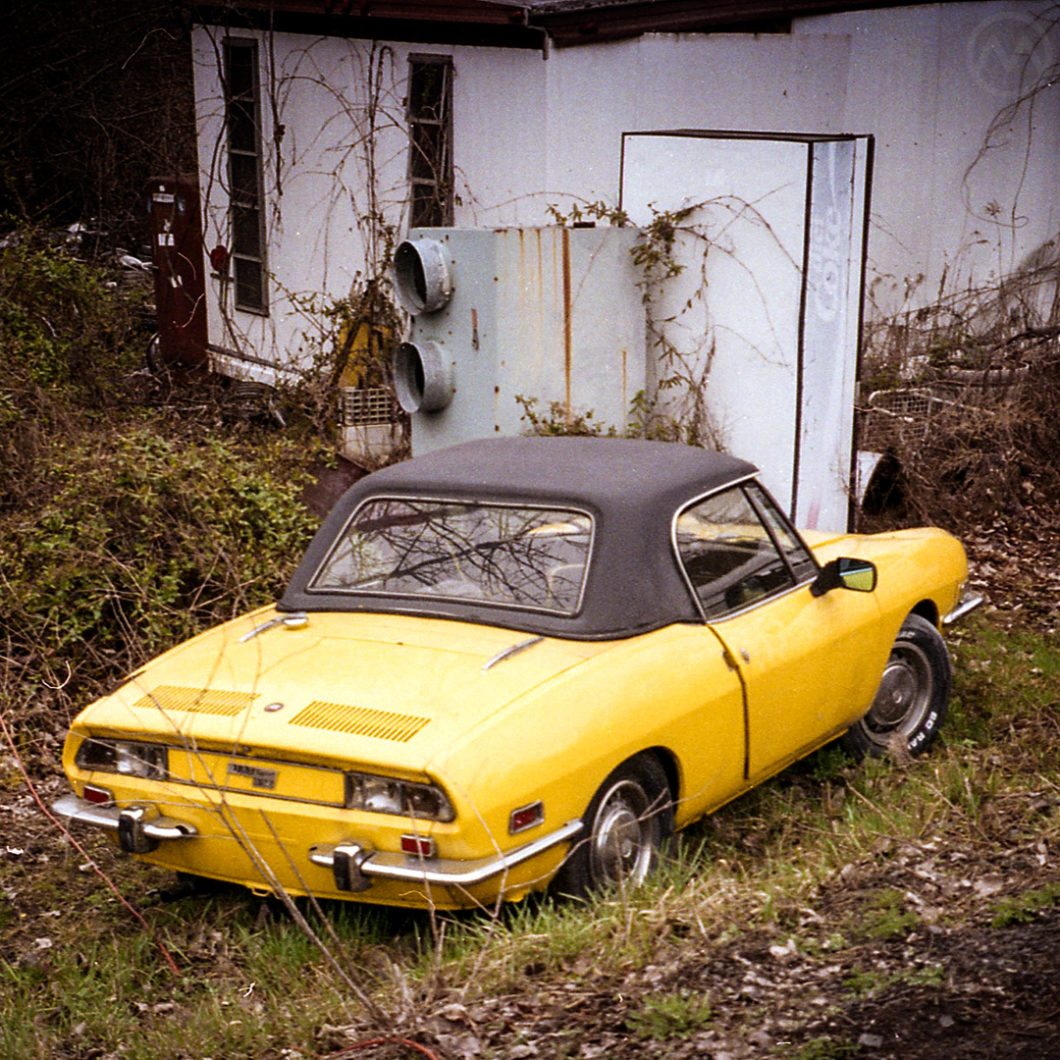Fiat intentionally designed the 850 Spider to be a “first” sports car for buyers who wanted something cooler than a 600 or 850 sedan, but were still on a tight budget. Being tiny and cheap new, they were always fun and interesting, but never “valuable” in monetary terms, particularly not after a major recall in the late 1970s and Fiat’s 1983 withdrawl from the U.S.
When this photo was taken – nearly 20 years ago – they tended to be found either in the hands of a loving enthusiast or as a dilapidated “project car” left out in the backyard too long. This one was in a Pennsylvania junkyard, though it was set aside as “sell whole, not for parts.”
You’d think that a car with only 903cc of engine wouldn’t be a popular choice for American freeways but, you’d be wrong. The U.S. was the 850 Spider’s biggest market. Though it was nearly bog standard 850 underneath, it looked and felt like a proper sports car thanks to Fiat’s well-thought-out design and Bertone’s rakish looks.
Origins of the 850
The 850 itself was not much more than a stretched and restyled Fiat 600, Dante Giacosa’s 1955 small family masterpiece. The 600 was a very good car and beloved in Italy (and Spain, and Yugoslavia, and, and…) and Fiat wanted to expand on that success with a model with more variations.
As such, the 850 was meant to be more of a good thing – a wider range of bigger bodies powered by bigger engines. Development began in 1959 and the 850 sedan, still a two-door only affair, debuted for 1964.
The new shell hid pretty much the entirety of the 600D’s mechanical setup – semi-trailing arms and coil springs, with swing axles out back, and powered by water-cooled fours, only now the standard engine had 843-cc and the unibody shell had been made larger.
A year later Fiat debuted the Coupe and Spider versions – the Coupe was done in-house, the Spider was done at Bertone by a young Giorgetto Giugiaro and the bodies were built at Bertone’s Grugliasco facility. The 850 family would also be joined by another variant of the 600, the 600t minibus/minivan, but that’s another story.
The early Spider bore a resemblance up front to Bertone’s Corvair Testudo, with faired-in, set back headlights and clean, unadorned sides. The light didn’t last – replaced with more upright DOT-compliant round lamps by 1968.
At just 48” (122cm) tall, the 850 Spider looked bigger and longer than it actually was, and it attracted many small sports car buyers with its low price, typically undercutting the MG Midget and Triumph Spitfire by a couple hundred dollars.
Early U.S. cars came with an 817cc unit to dodge emissions, but the basic engine was the regular 850’s 843-cc unit, strangely a contra-rotating unit, not that anybody would notice this until you had to take things apart. The size was upped to 903cc in 1970 and the 850 became the 850 Sport Spider. It was not fast without performance parts, but it felt fast and looked good
Forever Cheap
850s needed a careful owner and always had poor resale values, which made them a bargain or an albatross depending on your perspective, but the Spider outlived the rest of the 850s in the United States (in Europe, the 850t/900t camper outlived them all), on sale into early 1974 (mostly leftover ’73s) when the earliest U.S.-spec X1/9s arrived.
850s needed a careful owner because despite their mechanical simplicity, they required regular valve adjustments and a fair degree of maintenance – and having so small an engine meant they were always worked hard. Worst of all was the the press-fit fuel inlet on the carb, which could leak and cause a fire if it aged too long.
They could also rust, like most 60s/70s Fiats, with a vengeance. The rust problems on the 850 were pronounced enough and caused enough to complaints for NHTSA to force Fiat to recall and buy back thousands of cars in 1979, long after the 850 was off the radar as a new vehicle. The buy-back was, at that time, unprecedented.
Because the values were so low, it often didn’t make sense to invest in fixing an 850, which greatly reduced their numbers – but good ones could still be lots of fun and generally cheap to buy and own if maintained. This one, with only a little bit of rust, probably only needed a couple of weekends worth of work to put right.

